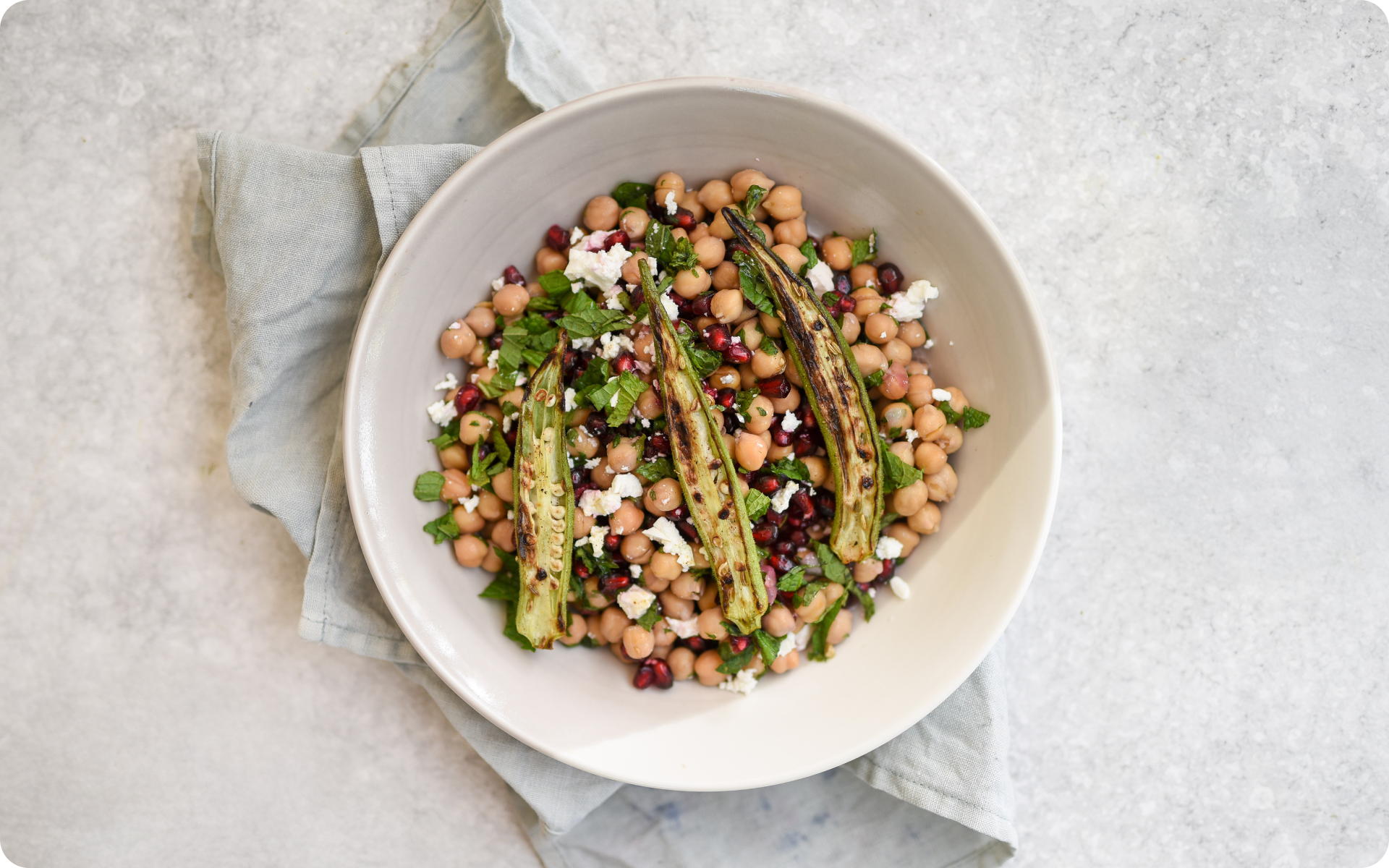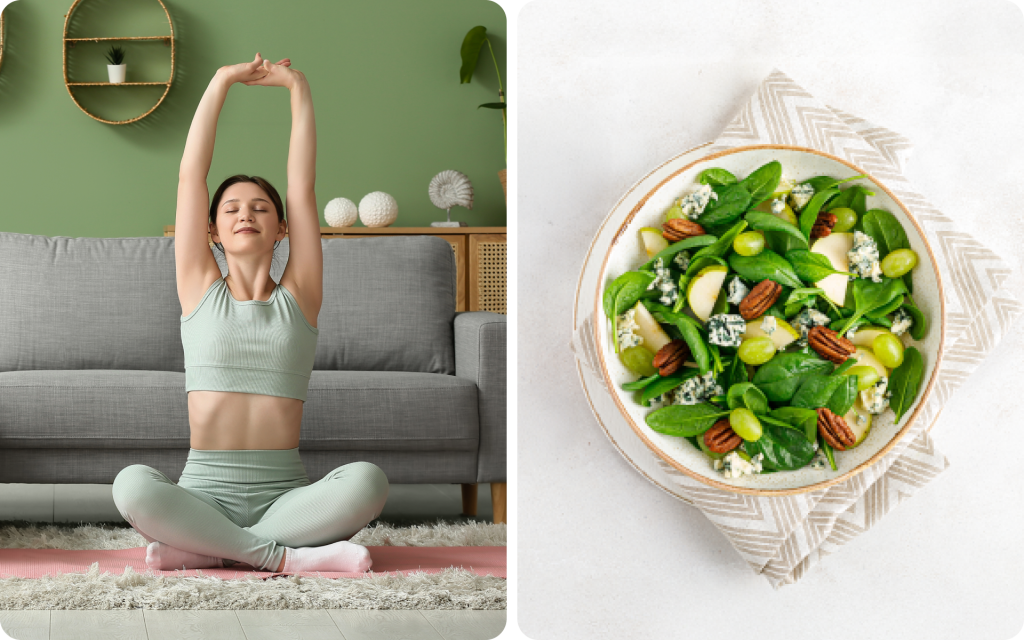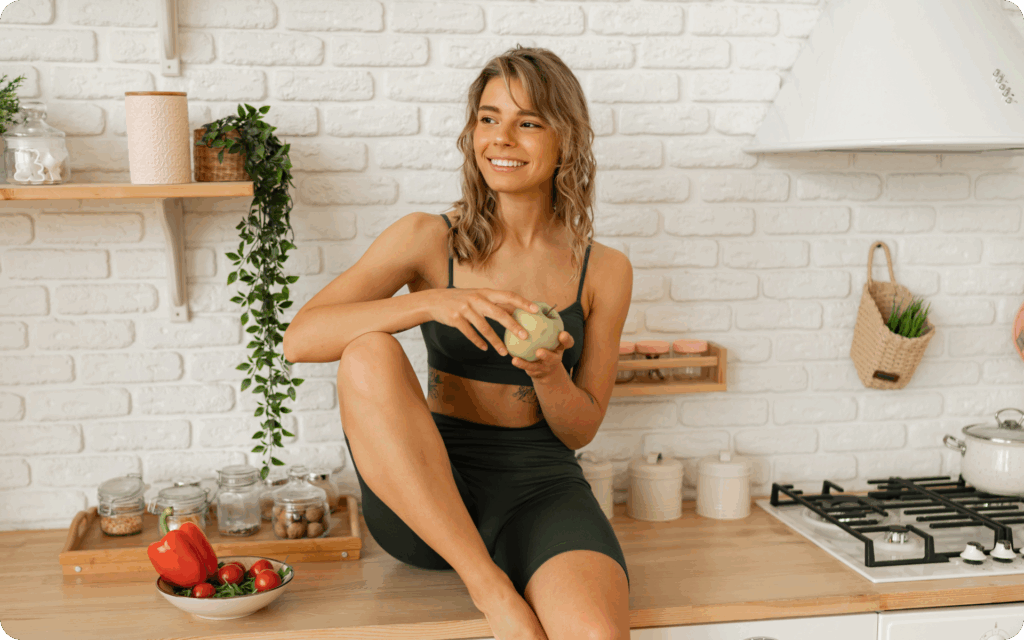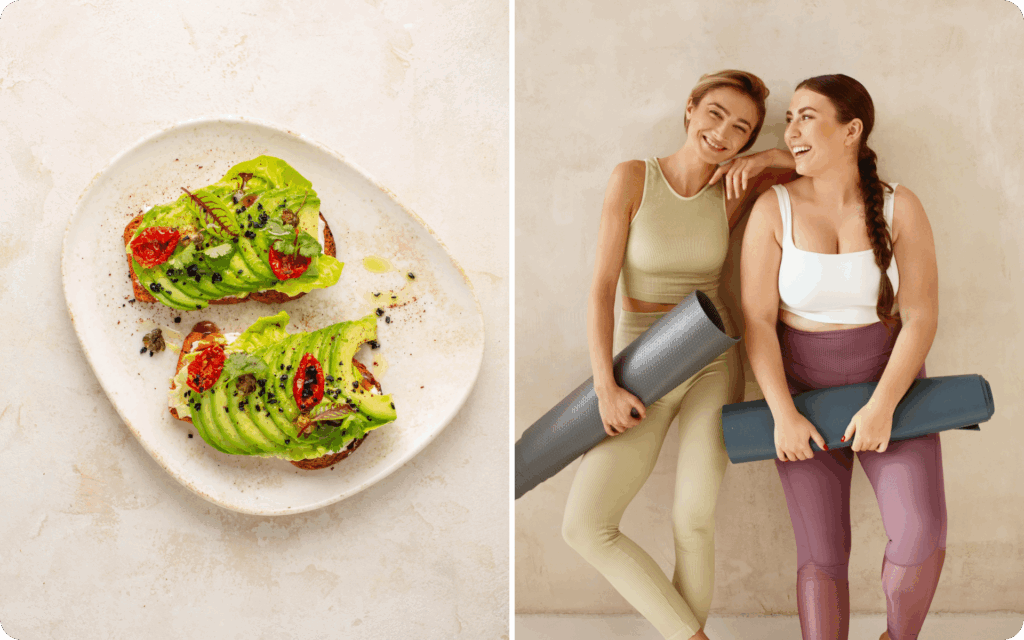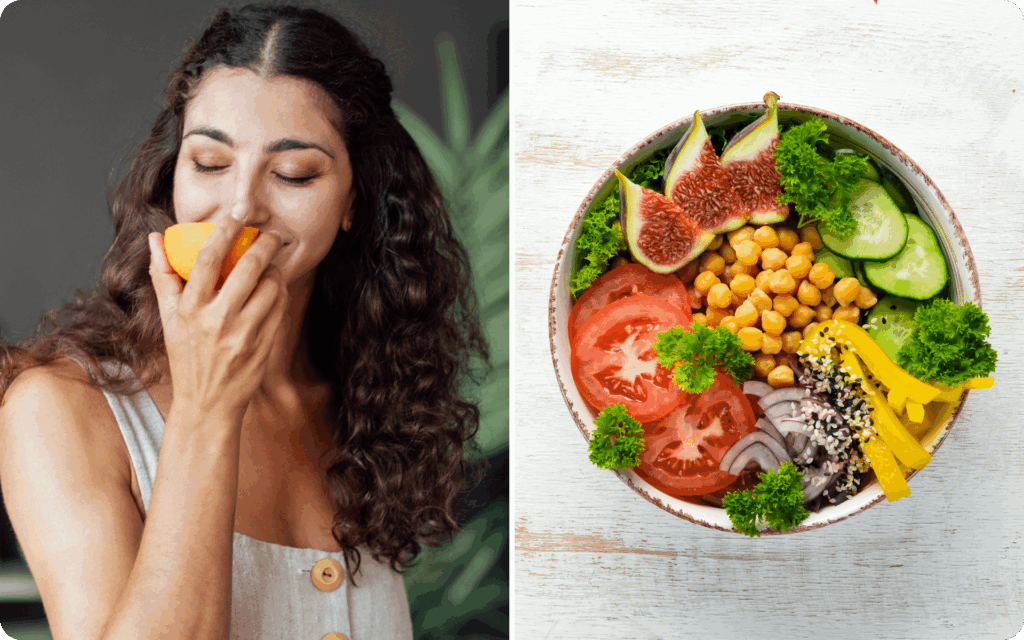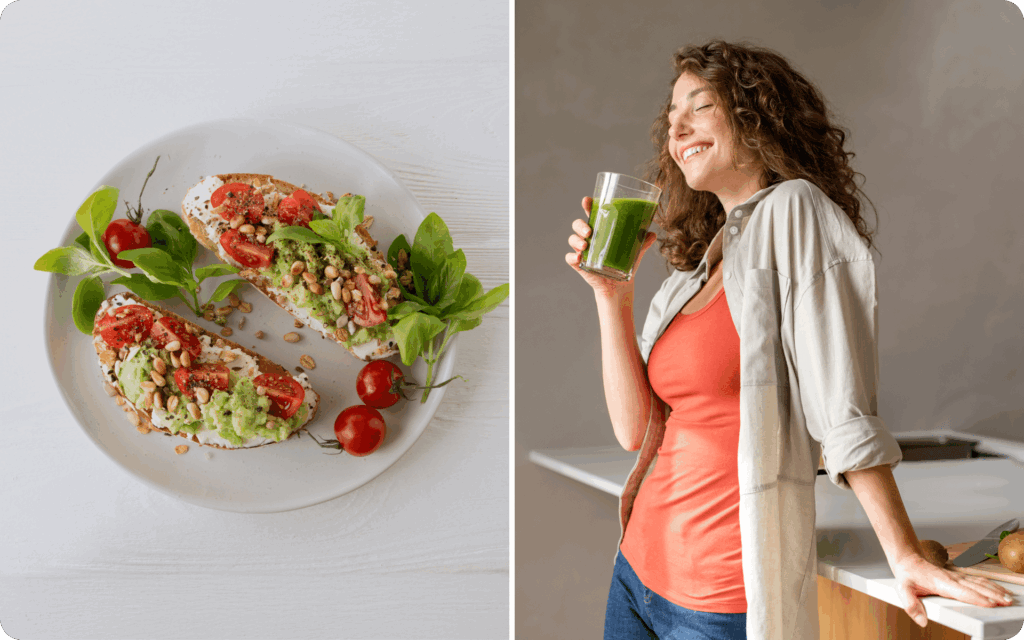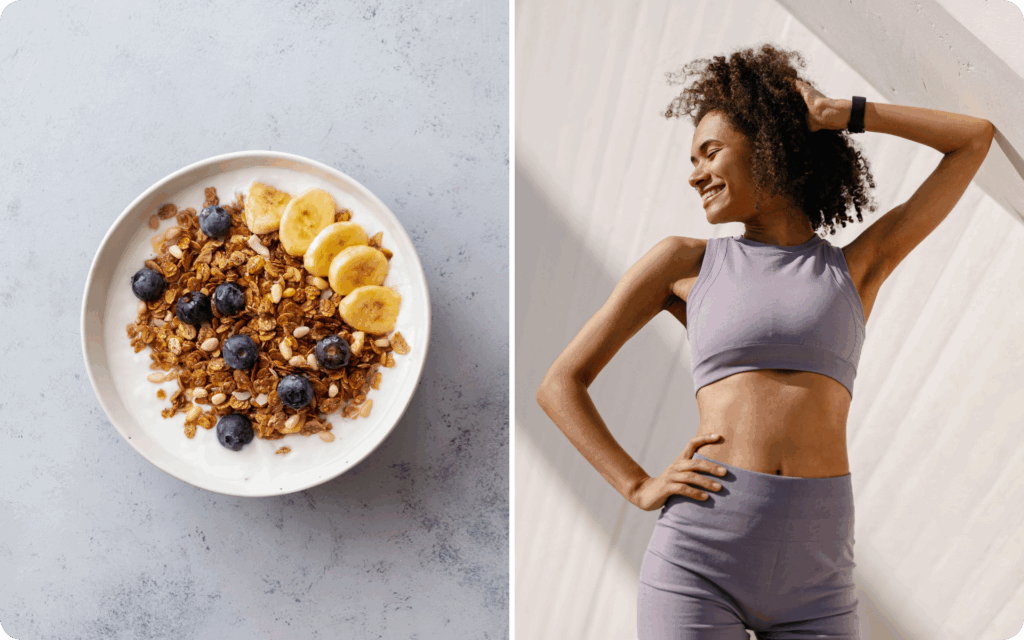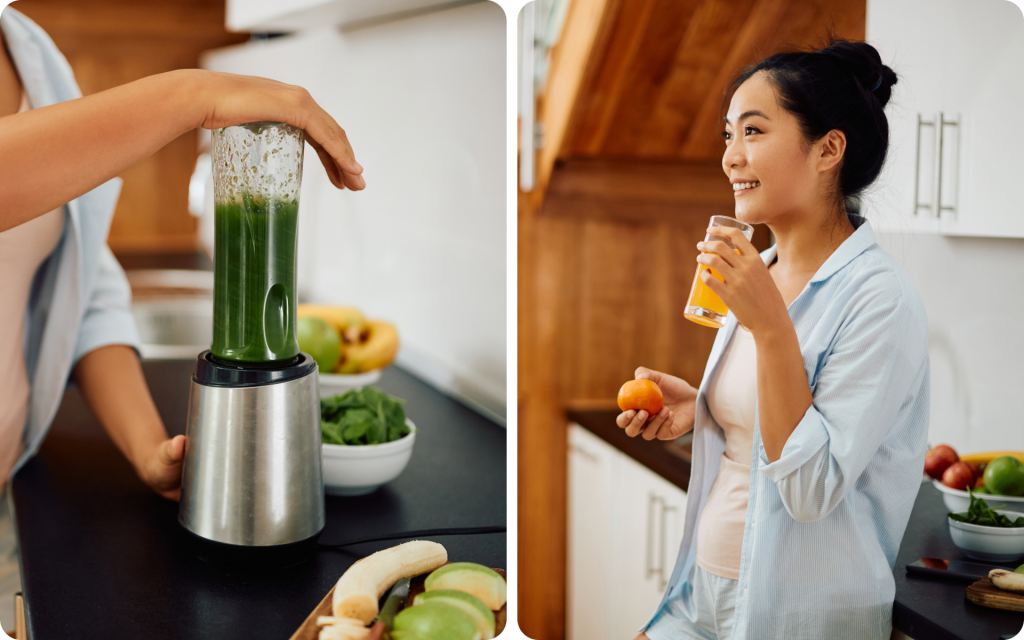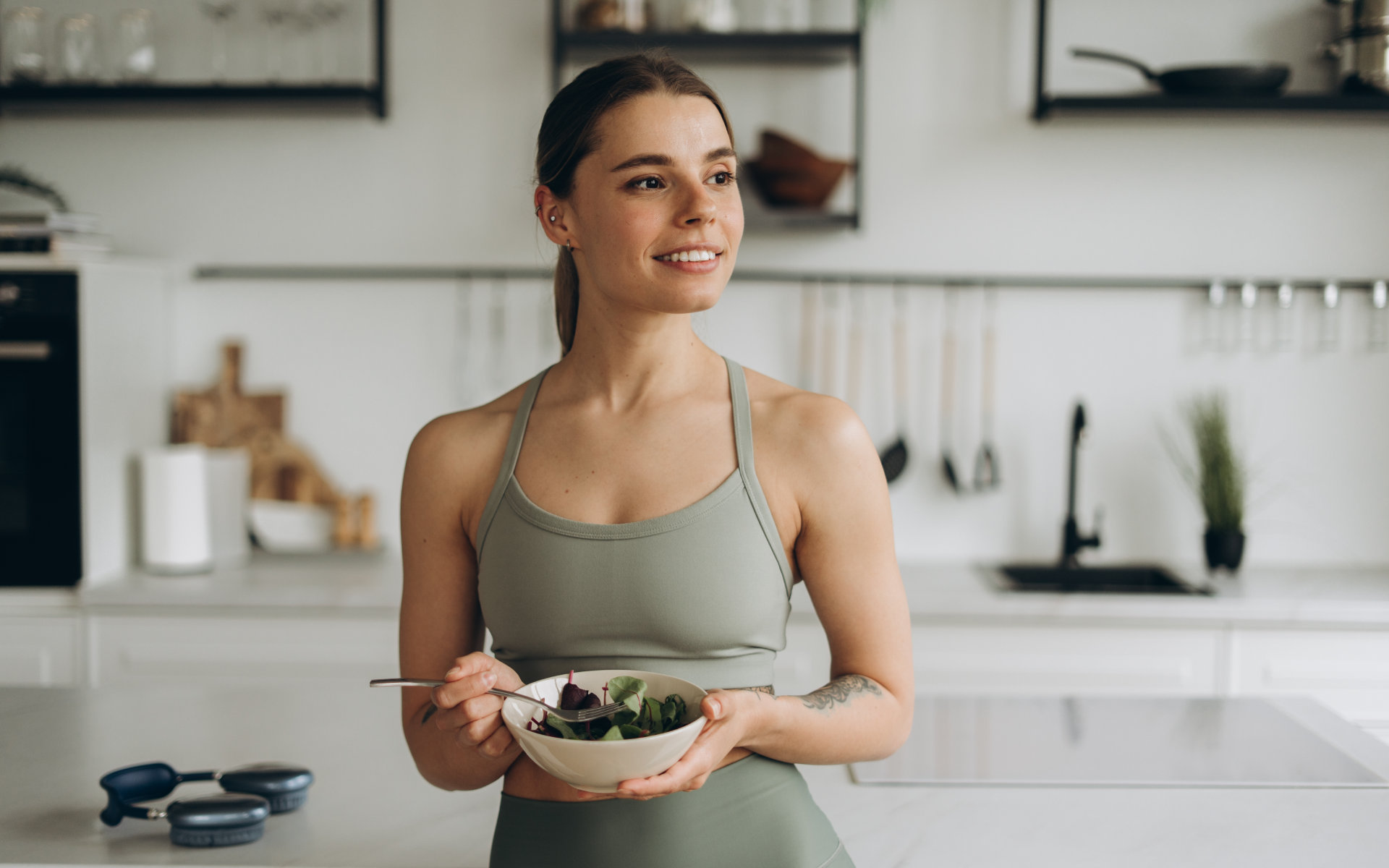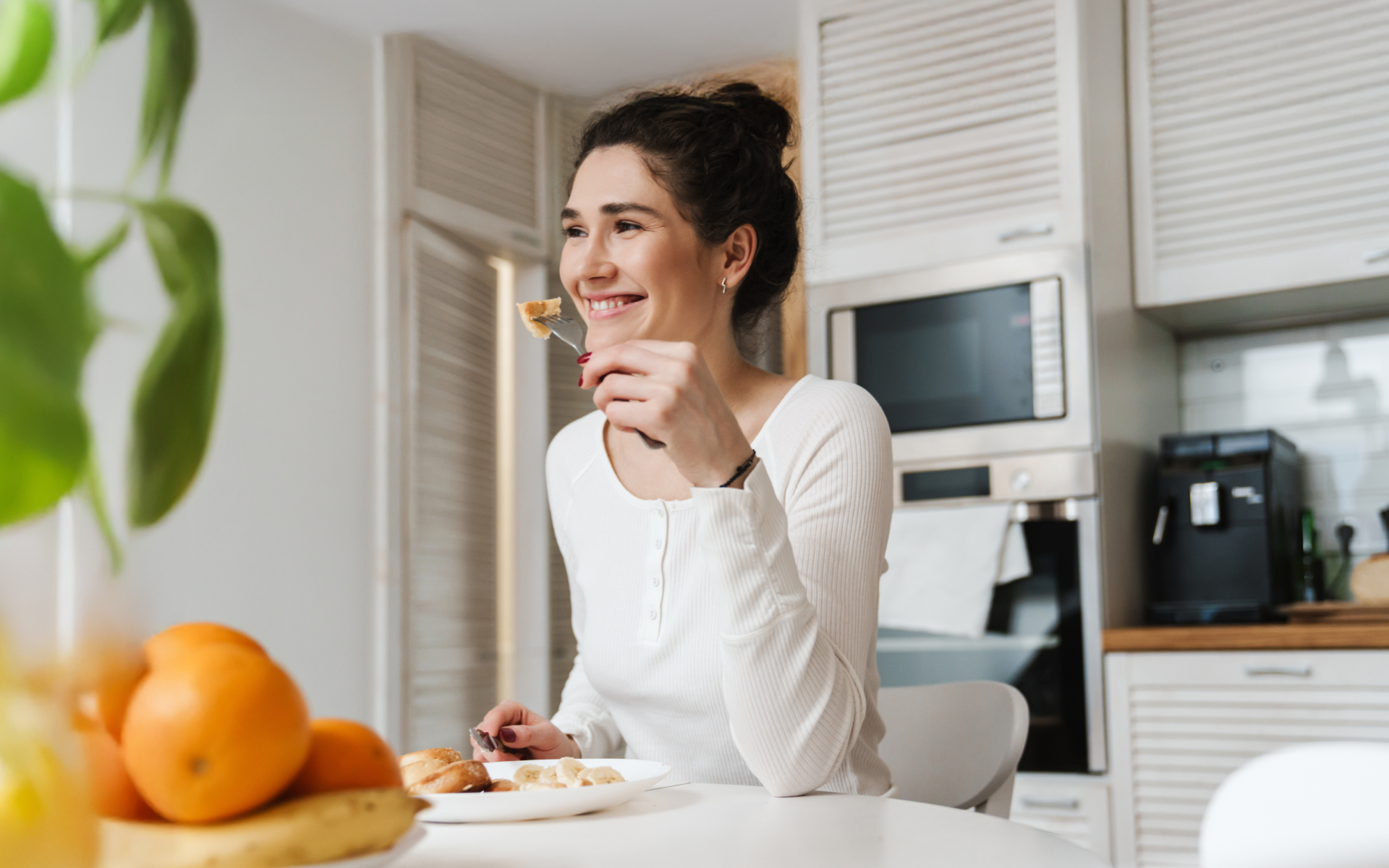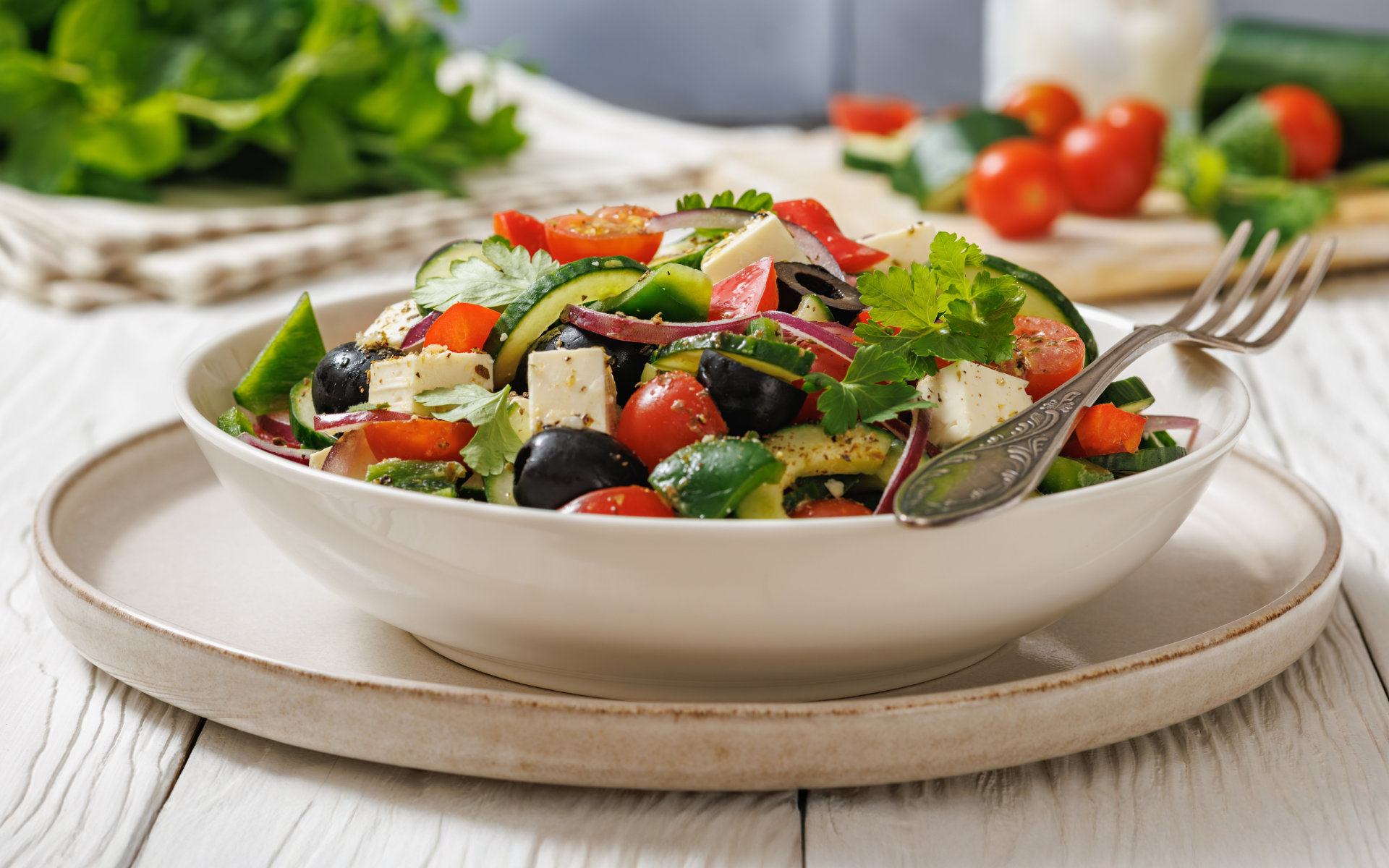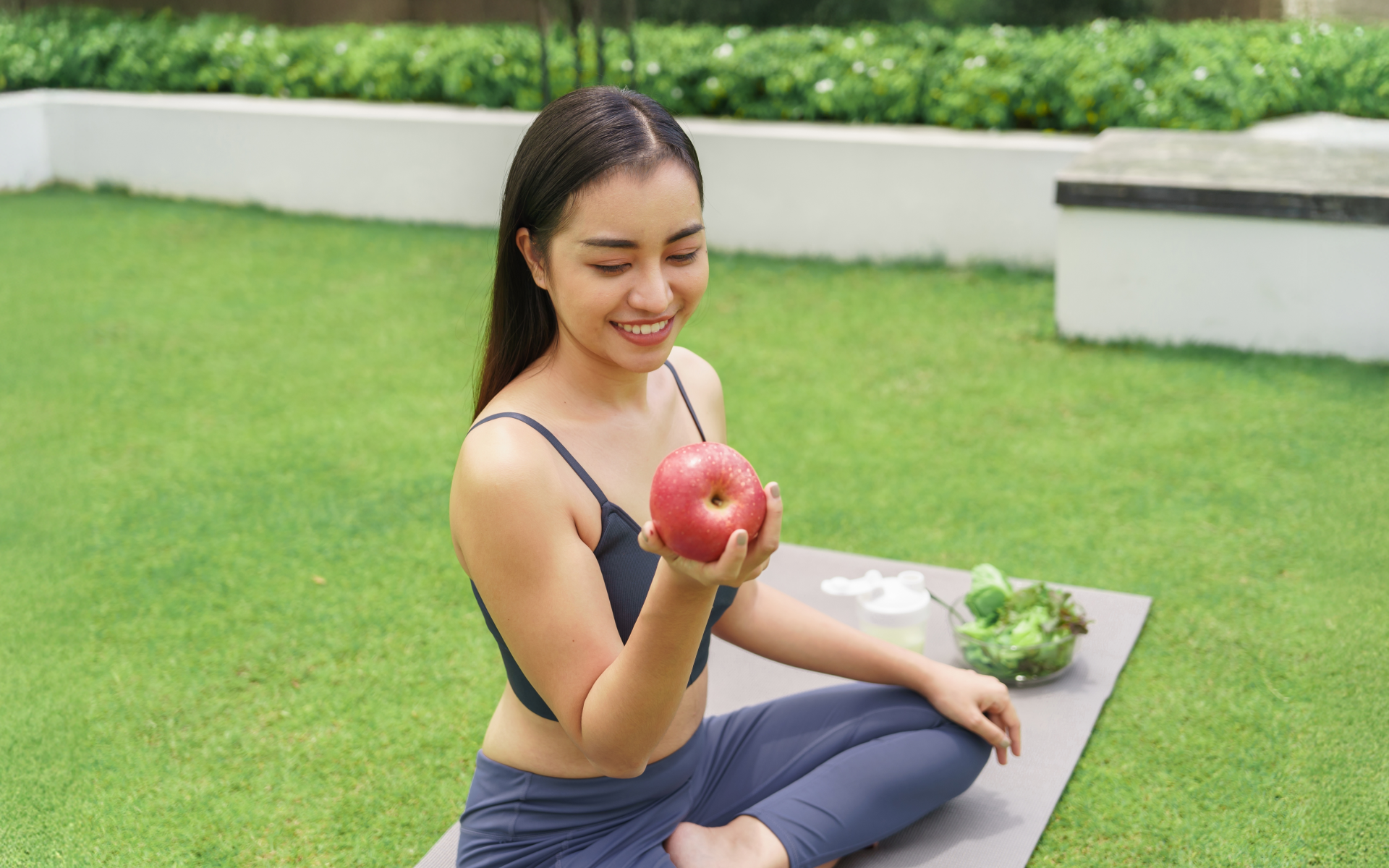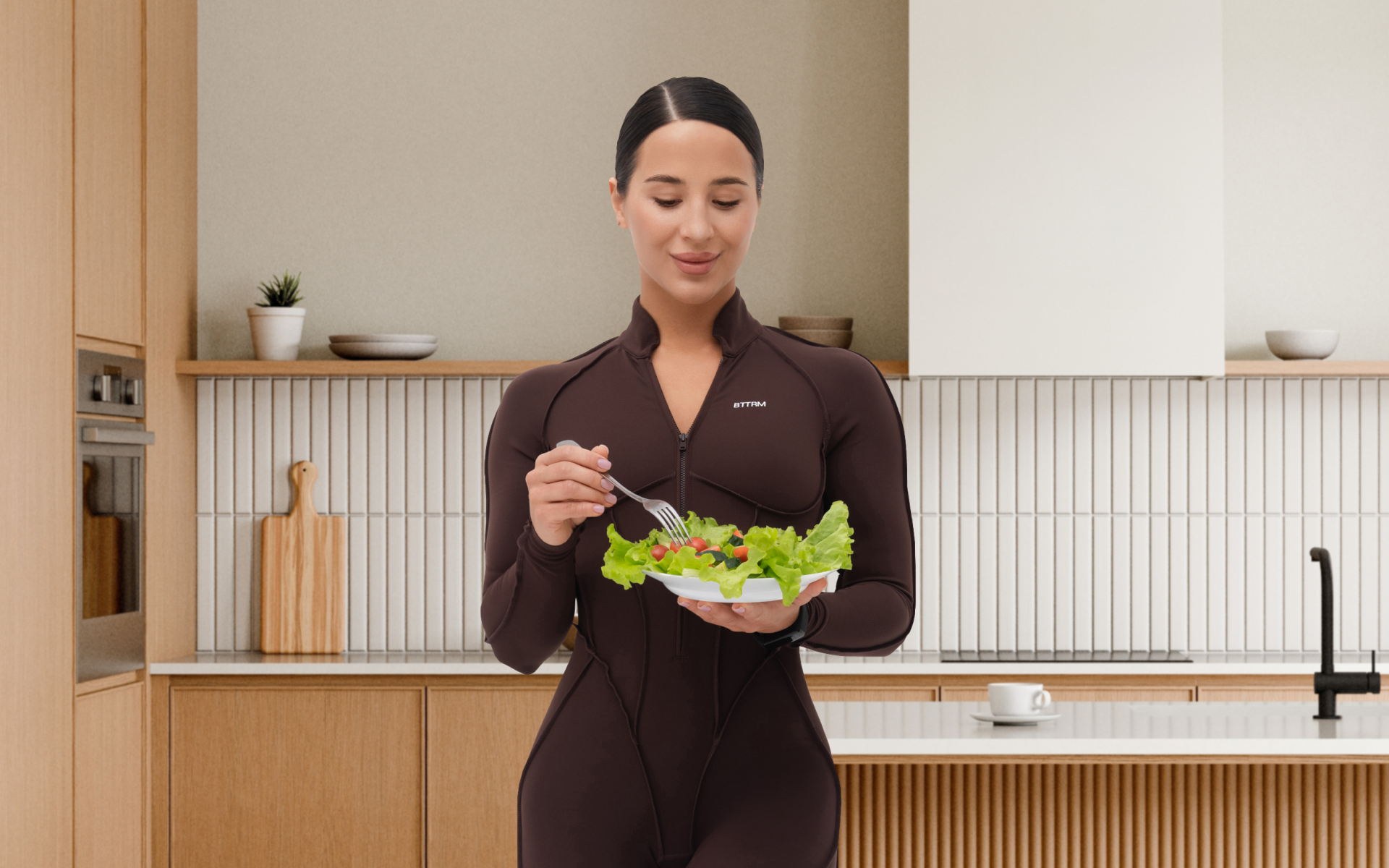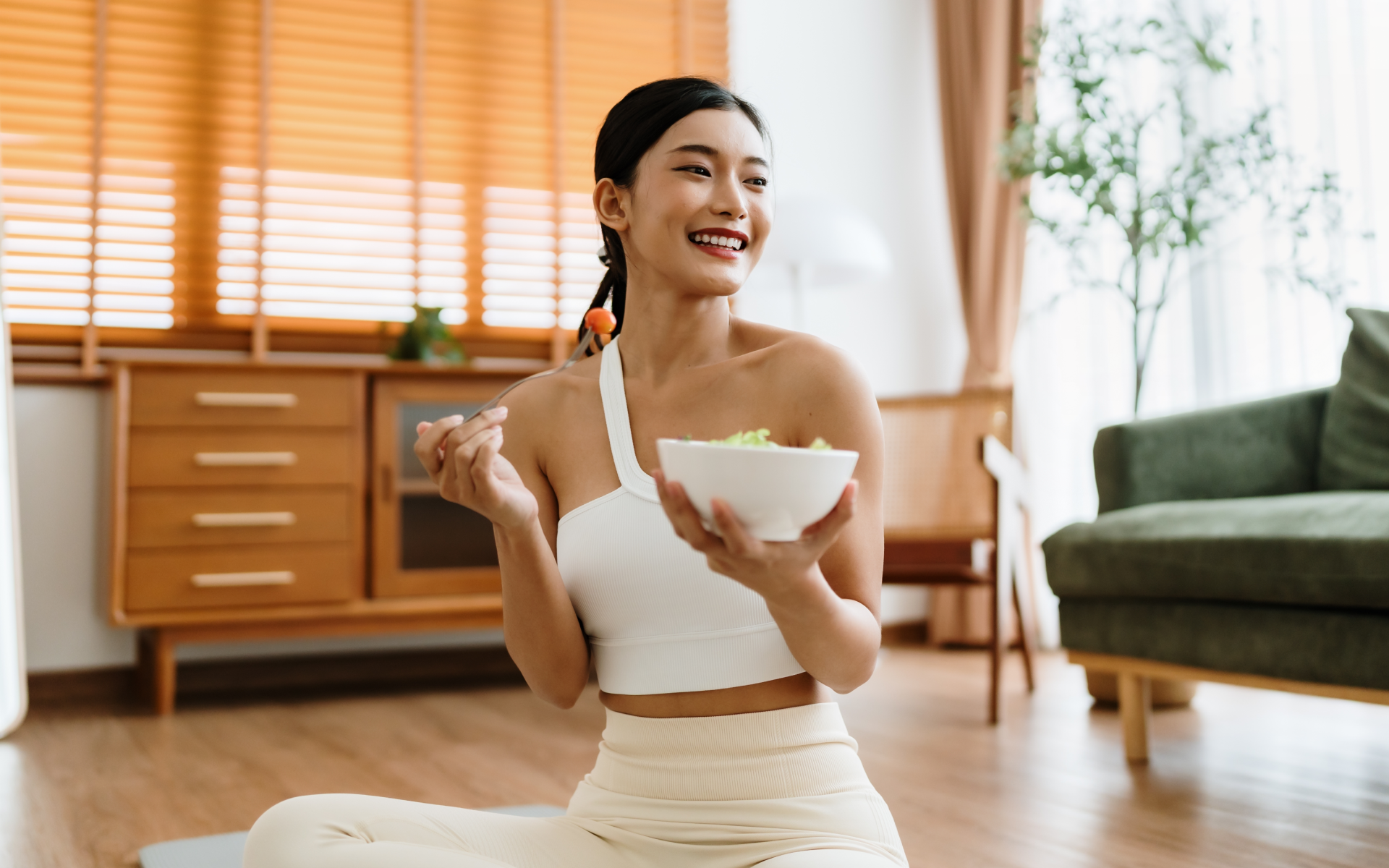The plant-based diet focuses on foods that come primarily from plants.
And no, the diet doesn’t revolve solely around fruits and veggies.
Other essential products are a vital part of this diet, such as nuts and seeds, beans and other legumes, and whole grains.
If you like greens, enjoy smoothies, and crave satisfying salads, you’ll love this diet.
Often, people choose to become “plant eaters” for a single, essential reason: to shed calories and tone up. But is this diet a real remedy for your weight loss goals?
This article will help you find out. Plus, if you have ever asked yourself, “What is a simple, easy plant-based meal plan?” you’re in the right place.
Starting from weight loss efficacy and ending with the best meals for this eating pattern, you’ll find this review helpful. Without further ado, explore the basics of the plant-based diet.
Can You Lose Weight Eating Only Plant-Based Foods?
In short, yes, you might lose weight eating only plant-based foods.
When creating an easy plant-based meal plan for weight loss, it’s best to include a variety of plant-based foods rather than focusing on a few ingredients all the time.
Your body requires proper nutrition if you want to lose weight healthily.
But what do studies say? Well, there are a few of them showcasing the efficacy of plant-based diets in overweight individuals:
- A recent review highlights the positive effects of a plant-based diet on weight loss in the long term. The review also acknowledges the impact of this diet on metabolic health (1). It makes sense, though, because rich-plant diets contain lots of fiber, which is a dominant element for your gut health and satiety.
- A review from Frontiers in Nutrition also examined the role of a plant-based diet in reducing weight. The researchers suggest that plant-based diets could be beneficial for improving health by helping with weight loss and improving related risk factors for chronic disease (2).
- A very recent secondary analysis of a clinical trial suggested that replacing animal products with plant-based foods can be helpful for weight loss (3).
- Other limited studies highlight not only positive effects of plant-based diets on human weight and metabolic health, but also their potential benefits for the environment (4).
To sum up this segment, the studies above suggest that starting a whole food plant-based meal plan may be a good idea if you want to improve your health and lose some weight.
Nonetheless, this diet may not suit every person. The right decision at this point is to talk to your healthcare provider to confirm that the plant-based diet is a good choice for you.
Read more: How To Start A Plant-Based Diet: A Beginner’s Guide To Simple, Healthy Eating
What Is The Easiest Way To Start A Plant-Based Diet?
How to start a plant-based diet is simple: you need to add more plant foods into your meals gradually. If you love meat, you don’t necessarily need to eliminate it on the first day.
The step-by-step instructions for starting a plant-based diet are as follows:
- Eat meat once a day instead of twice or more (as usual).
- Visit the market and purchase a variety of vegetables, fruits, whole grains, nuts, seeds, and legumes. Experiment with different tastes. Along with tomatoes, buy an aubergine or asparagus.
- Look for recipes for your easy plant-based meal plan for a week (Spoiler: some of the recipes you’ll get in this review).
- Swap usual ingredients with plant-based alternatives: for example, replace cow’s milk with oat, or swap beef tacos for bean tacos.
- Get educated about the plant-based sources of protein: try tofu, lentils, nuts and seeds, and tempeh, they are great options.
- Talk to a dietitian or healthcare provider about your nutrition; they will help you create a plan that suits your needs.
The more colorful products you add to your meals, the better. Different plant foods contain various vitamins, minerals, and beneficial plant compounds.. More diverse foods, more varied recipes, and ultimately better nutrition.
The BetterMe: Health Coaching app will provide you with a host of fat-frying fitness routines that’ll scare the extra pounds away and turn your body into a masterpiece! Get your life moving in the right direction with BetterMe!
What Should You Eat A Day On A Plant-Based Diet?
During the day, aim to include at least a few ingredients from each section of the plant-based diet list.
There are 6 major plant-based food list sections, involving: veggies, fruits, grains, nuts and seeds, protein, fat, drinks, spices, and herbs.
Veggies And Fruits
- Sweet potatoes
- Asparagus
- Cauliflower
- Artichokes
- Tomatoes
- Potatoes
- Spinach
- Zucchini
- Eggplant
- Squash
- Broccoli
- Kale
- Lettuce
- Carrots
- Peppers
- Bananas
- Pineapple
- Oranges
- Peaches
- Apples
- Berries
- Pears
Grains
- Whole wheat or legume-based pasta
- Whole wheat bread
- Brown rice
- Oatmeal
- Bulgur
- Barley
- Farro
- Quinoa
Nuts And Seeds
- Almonds
- Peanuts
- Cashews
- Pecans
- Chia seeds
- Flaxseeds
- Peanut butter
- Almond butter
- Pumpkin seeds
- Macadamia nuts
- Sunflower seeds
Protein
- Tofu
- Tempeh
- Beans
- Seitan
- Lentils
- Quinoa
- Hummus
- Chickpeas
- Edamame
Fat
- Nuts
- Avocado
- Nut butter
- Olive, avocado, canola, and other vegetable oils
Drinks
- Tea
- Water
- Nut-based beverages (almond milk, cashew milk)
- Fresh-squeezed juices
- Rice milk
- Oat milk
- Soy milk
- Hemp milk
- Coffee
Spices And Herbs
- Basil
- Saffron
- Cardamom
- Turmeric
- Cinnamon
- Allspice
- Oregano
- Rosemary
- Cayenne pepper
- Garlic powder
- Onion powder
- Lemon and pepper
- Red pepper flakes
What Are The Easiest Plant-Based Meals For Beginners?
If you want to tackle your 30-day plant-based diet plan with fresh and easy recipes, it’s time to explore the top options now.
All of these recipes require zero master chef experience, only essential ingredients, which anyone can swap with alternatives.
- Black Bean–Quinoa Bowl
- Vegan Bistro Lunch Box
- Quinoa Chickpea Salad with Roasted Red Pepper Hummus Dressing
- Avocado Toast with Sprouts
- Tofu Cucumber Salad with Spicy Peanut Dressing
- Pineapple Nice Cream
- Cocoa-Chia Pudding with Raspberries
Black Bean–Quinoa Bowl
Ingredients:
- ¼ cup hummus
- 3 tablespoons pico de gallo
- 1 tablespoon lime juice
- ⅔ cup cooked quinoa
- ¾ cup canned black beans, rinsed
- ¼ medium avocado, diced
- 2 tablespoons chopped fresh cilantro
Instructions:
- In a bowl, combine beans and quinoa.
- In another small bowl, stir hummus and 1 tablespoon lime juice; thin with water to desired consistency.
- Drizzle the hummus dressing over the beans and quinoa.
- Top with avocado, pico de gallo, and cilantro.
Nutritional value per serving (about 2 cups):
- Calories: 500
- Fats: 16 grams
- Protein: 20 grams
- Fiber: 20 grams
- Carbs: 74 grams (5).
Vegan Bistro Lunch Box
Ingredients:
- ½ whole-wheat pita bread, cut into 4 wedges
- ¼ cup hummus
- ¼ large red bell pepper, sliced
- 2 tablespoons mixed olives
- 1 cucumber, cut into spears
- ¼ teaspoon chopped fresh dill
Instructions:
- Arrange hummus, olives, pita, cucumber, and bell peppers in a 4-cup divided sealable container.
- Sprinkle cucumber with dill.
- Keep refrigerated until ready to use.
Nutritional value per serving (recipe makes 1 serving):
- Calories: 194
- Fats: 9 grams
- Protein: 8 grams
- Fiber: 7 grams; Carbs: 23 grams (6).
If you wish to free yourself from all the extra pounds that have been weighing you down for way too long, start using the BetterMe: Health Coaching app and overhaul your entire life!
Quinoa Chickpea Salad With Roasted Red Pepper Hummus Dressing
Ingredients:
- Pinch of salt
- Pinch of ground pepper
- 2 tablespoons hummus
- ½ cup cooked quinoa
- ½ cup chickpeas, rinsed
- 1 tablespoon lemon juice
- 2 cups mixed salad greens
- 1 tablespoon chopped fresh parsley
- 1 tablespoon unsalted sunflower seeds
- 1 tablespoon chopped roasted red pepper
Instructions:
- In a small dish, stir hummus, lemon juice, and red peppers. Thin with water to the desired consistency for dressing.
- In a large bowl, arrange greens, quinoa, and chickpeas. Top with sunflower seeds, parsley, salt, and pepper.
- Serve with the dressing.
Nutritional value per serving (recipe makes 1 serving):
- Calories: 379
- Fats: 11 grams
- Protein: 16 grams
- Fiber: 13 grams
- Carbs: 59 grams (7).
Avocado Toast With Sprouts
Ingredients:
- ¼ cup plain hummus
- 1 cup mixed salad greens
- ¼ avocado, sliced
- 2 slices of sprouted whole-wheat bread, toasted
- ¼ cup alfalfa sprouts
- 1 teaspoon red-wine vinegar
- 1 teaspoon extra-virgin olive oil
- Pinch of salt
- Pinch of pepper
- 2 teaspoons unsalted sunflower seeds
Instructions:
- In a medium bowl, toss greens with vinegar, oil, salt, and pepper.
- Spread each slice of toast with hummus.
- Top your toast with sprouts, avocado, and the greens, and sprinkle with sunflower seeds.
Nutritional value per serving (about 2 toasts):
- Calories: 429
- Fats: 22 grams
- Protein: 16 grams
- Fiber: 15 grams
- Carbs: 46 grams (8).
Tofu Cucumber Salad With Spicy Peanut Dressing
Ingredients for the dressing:
- 1 ½ tablespoons natural peanut butter
- 1 tablespoon reduced-sodium soy sauce
- 1 ½ teaspoons toasted (dark) sesame oil
- ¼ teaspoon ground Sichuan peppercorns
- 1 teaspoon black bean-garlic sauce
- ½ teaspoon chile-garlic sauce
- ¼ teaspoon finely chopped garlic
- 1 teaspoon minced fresh ginger
- 1 tablespoon rice vinegar
- ½ teaspoon sugar
For the salad:
- ¼ cup chopped salted roasted peanuts
- 1 large English cucumber, quartered and sliced 3/4 inch thick
- 1 cup coarsely chopped cilantro, divided
- ¼ cup thinly sliced scallion greens
- 8 ounces extra-firm water-packed tofu, drained and cut into 1/2-inch cubes
Instructions:
- Prepare the dressing by combining all the dressing ingredients in a medium bowl; whisk until well combined.
- In a separate large bowl, combine tofu, cucumber, and 3/4 cup cilantro. Add 2 tablespoons of the dressing; toss until well coated. Cover and refrigerate for 30 minutes.
- Transfer the salad to a serving bowl.
- Drizzle with the remaining dressing. Top with peanuts, cilantro, and scallions.
Nutritional value per serving (about 1 cup):
- Calories: 167
- Fats: 12 grams
- Protein: 10 grams
- Fiber: 3 grams
- Carbs: 7 grams (9).
Pineapple Nice Cream
Ingredients:
- 1 cup frozen mango chunks or 1 large mango, peeled, seeded, and chopped
- 1 16-ounce package frozen pineapple chunks
- 1 tablespoon lemon juice or lime juice
Instructions:
- In a food processor, process pineapple, mango, and lemon juice until smooth and creamy.
- For the best texture, serve immediately.
Nutritional value per serving (about ½ cups):
- Calories: 55
- Fats: 0 grams
- Protein: 1 grams
- Fiber: 2 grams
- Carbs: 14 grams (10).
Cocoa-Chia Pudding With Raspberries
Ingredients:
- ¼ teaspoon vanilla extract
- 2 tablespoons chia seeds
- 2 teaspoons pure maple syrup
- ½ cup fresh raspberries, divided
- ½ teaspoon unsweetened cocoa powder
- 1 tablespoon toasted sliced almonds, divided
- ½ cup unsweetened almond milk or other nondairy milk
Instructions:
- Stir milk, chia seeds, maple syrup, cocoa powder, and vanilla in a small bowl. Cover and refrigerate for at least 8 hours and up to 3 days.
- Spoon about half the pudding into a serving glass and top with half the raspberries and almonds.
Nutritional value per serving (about 1 cup):
- Calories: 222
- Fats: 11 grams
- Protein: 6 grams
- Fiber: 13 grams
- Carbs: 28 grams (11).
Read more: 20 Plant-Based Breakfast Ideas to Jumpstart the Day, With Some Unique Picks
What Is An Example Of An Easy Plant-Based Meal Plan?
Now, with the list of tasty meals, you can pull off an easy plant-based meal plan for beginners. It’s perfect for busy days, free time, or anyone who loves cooking and wants to organize their dishes in order.
- Breakfast: Avocado toast with sprouts and a cup of coffee.
- Lunch: Quinoa chickpea salad with roasted red pepper hummus dressing.
- Dinner: Tofu cucumber salad with spicy peanut dressing.
- Dessert: Pineapple nice cream.
- Snack: One banana with peanut butter and dark chocolate chips or trail mix.
Feel free to use other recipes in your easy, 7-day plant-based meal plan to fill your body with nutrients and stay energetic. If you’re not feeling satisfied after a meal, you can either have a snack after or prepare a larger meal.
What To Avoid On A Plant-Based Diet?
There are certain products you need to either eliminate or at least reduce their intake during the plant-based diet:
Animal Products:
- Fish and seafood
- Meat (chicken, beef, pork, lamb, etc.)
- Eggs
- Dairy
- Gelatin
- Honey
Highly Processed Foods:
- Fried foods
- Junk food
- Granola bars, cereals, potato chips, and cookies
- Refined grains (white pasta, white rice, bread, and pastries)
- Plant-based ultra-processed foods can contain a high amount of sodium and added sugars
Added Sugars (limit):
- White sugar
- Sweet treats
- Sugary beverages
- High-fructose corn syrup
The main reasons contributing to the feeling of hunger are different: you might not consume enough calories, you eat less protein than you require, or you do not drink enough fluids. To avoid this feeling, consider consuming protein-rich meals, staying hydrated, and preparing slightly larger meals. No, eggs are animal-based products, so they are not welcome in an entirely plant-based diet. However, if you want to get more flexible, then you might add egg consumption to your plant-based routine (the choice is yours!). Yes, bananas are allowed on plant-based diets because they are fruits. They are naturally sweet and satisfying, offering a whole range of nutrients, so you can enjoy them any time you desire. Tofu is 100% plant-based as it comes from soybeans. It contains a high amount of protein, iron, and calcium. The best part about tofu is that it works well in many different recipes that tackle your plant-based regime.Frequently Asked Questions
Why am I so hungry on a plant-based diet?
Can you eat eggs on a plant-based diet?
Can you eat bananas on a plant-based diet?
Is tofu plant-based?
The Bottom Line
You’ve got the answer to the question “What is a simple, easy plant-based meal plan?” covered. Now it’s time to grab your bag and get all the ingredients for your plant-based recipes.
Although this diet is safe and even offers benefits, especially for weight loss and management, it’s advisable to consult with a healthcare provider before starting any new dietary plan.
DISCLAIMER:
This article is intended for general informational purposes only and does not serve to address individual circumstances. It is not a substitute for professional advice or help and should not be relied on for making any kind of decision-making. Any action taken as a direct or indirect result of the information in this article is entirely at your own risk and is your sole responsibility.
BetterMe, its content staff, and its medical advisors accept no responsibility for inaccuracies, errors, misstatements, inconsistencies, or omissions and specifically disclaim any liability, loss or risk, personal, professional or otherwise, which may be incurred as a consequence, directly or indirectly, of the use and/or application of any content.
You should always seek the advice of your physician or other qualified health provider with any questions you may have regarding a medical condition or your specific situation. Never disregard professional medical advice or delay seeking it because of BetterMe content. If you suspect or think you may have a medical emergency, call your doctor.
SOURCES:
- A Review of Plant-Based Diets for Obesity Management (2024, sciencedirect.com)
- Plant-based diet for obesity treatment (2022, frontiersin.org)
- Vegan diet, processed foods, and body weight: a secondary analysis of a randomized clinical trial (2025, nutritionandmetabolism.biomedcentral.com)
- Plant-based and sustainable diet: A systematic review of its impact on obesity (2025, onlinelibrary.wiley.com)
- Black Bean–Quinoa Bowl (2025, eatingwell.com)
- Vegan Bistro Lunch Box (2024, eatingwell.com)
- Quinoa Chickpea Salad with Roasted Red Pepper Hummus Dressing (2024, eatingwell.com)
- Avocado Toast with Sprouts (2024, eatingwell.com)
- Tofu Cucumber Salad with Spicy Peanut Dressing (2024, eatingwell.com)
- Pineapple Nice Cream (2024, eatingwell.com)
- Cocoa-Chia Pudding with Raspberries (2024, eatingwell.com)
